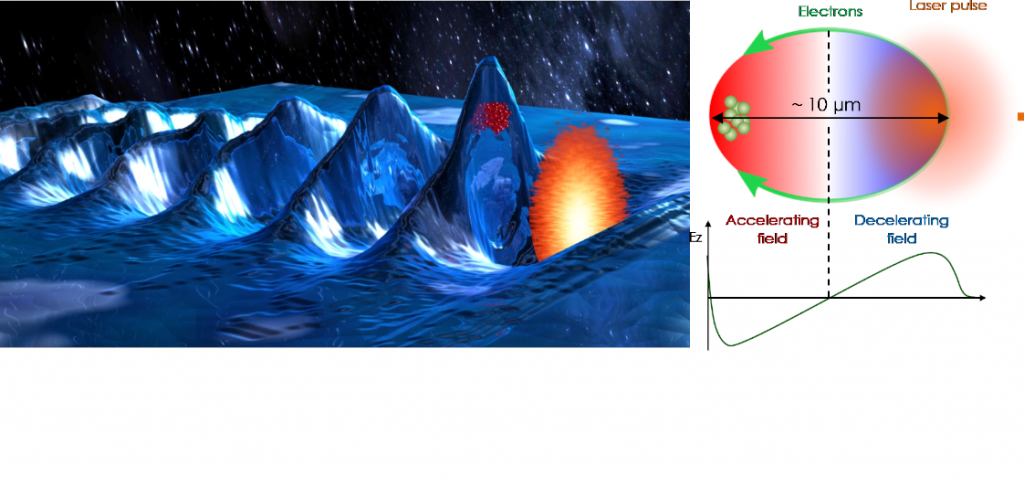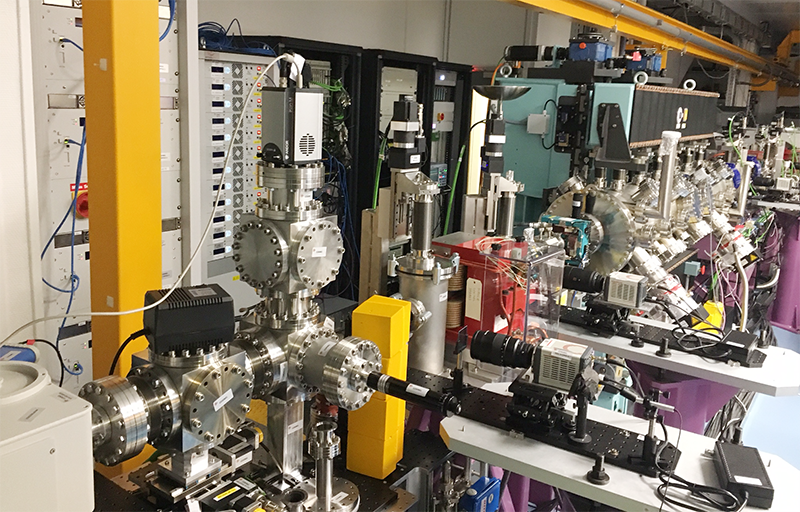Laser WakeField Acceleration (LWFA)
Laser wakefield accelerators exploit the property of plasma to withstand electric fields of extreme amplitude for producing high-energy electrons over short distances. As it propagates in a plasma, an intense laser pulse, can actually generates in its wake a plasma wave with electric field (the wakefields) that are 3 to 4 orders of magnitude larger than those in conventional accelerators. Electrons trapped in the plasma wave can thus be accelerated up to energies of a few GeV in just a couple of centimeters.

In the past 10 years, the group has worked mainly on the improvement of the beam quality and stability, studying, for instance, electron focusing and injection techniques, or methods for reducing the beam energy spread. More recently we focused on new concepts for increasing the beam energy. A 60 % energy gain was first achieved by manipulating the phase of the electron beam to keep it longer in the accelerating field. We also developed a laser-plasma wave-guide to keep laser focused in the plasma on extended distances. Finally, we proposed to use a diffraction-free superluminal laser pulse to achieve a dephasing-less acceleration, which could allow to increase the beam energy by several orders of magnitude.
Current activities are still related to the improvement of the beam quality and energy, with the aim to produce reliably GeV’s electron beam with fs pulse duration, low emittance, and low energy spreads, which should prompt the development of scientific and societal applications of plasma accelerators.
One of the most promising applications of plasma particle accelerators is the realization of a compact free-electron-laser (FEL). In collaboration with Synchrotron SOLEIL and University of Lille, we showed that the electron beam properties at the entrance of the undulator can be properly controlled by using a specific transport line designed to handle LWFA-type electron beams [Nat. Commun. 9, 1334 (2018)], and that by doing so the electron beam can produce undulator radiation that exhibits all the properties and quality achieved at conventional synchrotron facilities [Sci. Rep. 9, 19020 (2019)]. These results pave the way for the experimental demonstration of FEL gain using LWFA electron beams.



